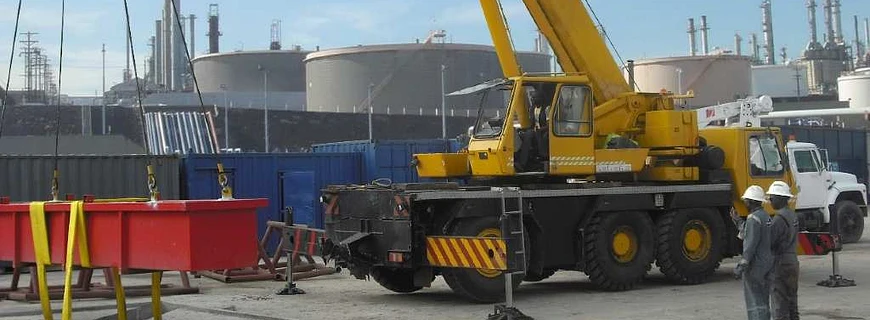PROOF LOAD TESTING THE WHAT, WHY, WHEN AND HOW?

Proof Load Testing The What, Why, When and How?
Proof load test, proof test, overload test, and load testing are often terms that are used interchangeably in the industry but whilst the former 2 describes the scope definition, the latter 2 describes it as a process.
The What:
In simple terms, a proof load test is a type of test that proves the fitness of a lifting equipment, appliance, or load-bearing structure. So, it involves the application of a static, dynamic, or functional load to a structure or equipment for a period depending on the purpose of the test. A proof load test is usually expressed as a percentage of the working load limit (WLL) that the equipment is designed to withstand. The exact requirements of proof testing and the extent of each test can vary depending on standards, equipment or industries involved, as well as individual requirements from customers or as part of manufacturers’ own quality controls process.
Proof load tests may be required as part of a Thorough Examination in compliance with the Lifting Operations and Lifting Equipment Regulations 1998 (LOLER) that place duties on people and companies who own, operate, or have control over lifting equipment.
According to LOLER the decision to conduct a proof load test lies with the Competent Person, who makes an informed decision as to what is appropriate based on their experience, training and familiarity with the operation and function of the equipment. They determine if a proof test is necessary or helpful to assess a piece of lifting equipment.
The Why:
Proof load test may be required to ensure a lifting equipment works correctly and safely through its operational cycle. For newly constructed and installed load bearing structures, a proof load test may be required to prove the fitness of the structure to be able to withstand design and operational loads and/or a proof of the installation process at its operational location. A thorough visual examination often tell very little about the equipment, the conditions of the internal working parts would be difficult to determine.
It is firstly driven by legislation, according to LOLER, a proof test of lifting equipment may be required new or after repair. BS EN12079 and DNV2.7-1 standards set minimum criteria for design, material, production, and testing of containers used in offshore applications, with specific guidance on proof testing.
For an equipment already in-service such as a crane, proof load tests may be required to check crane is structurally and mechanical sound for instance checking winch brakes hold under the require line pull.
The When:
i. During manufacture (New)
As part of quality control procedures, standards, and certification requirements, some lifting equipment are proof load tested to check the quality of construction meets operational specification for the equipment. This also applies for new lifting equipment or load bearing structure after installation and/or reconfiguration at its final location. BS EN12079 and DNV2.7-1 standards set minimum criteria for design, material, production, and testing of containers used in offshore applications, with specific guidance on proof testing. The Machinery Directive 2006/42/EC section 4.1.2.3 addresses the static and dynamic tests that must be performed on all lifting machinery ready to be put into service. These tests help satisfy the ‘fitness for purpose’ requirement of lifting machinery or lifting accessories.
ii. After Major Repair
A proof test is required in cases where the equipment has undergone significant repair including major modifications affecting its structure, foundations, fixings or lifting points etc. Following a repair or major modification of critical components such as –
- Mechanical – hoisting and slewing brake systems
- Structural – boom section, foot pins, fasteners, pedestal
- Rigging – hook blocks
It is imperative to point out some fundamental differences between Proof Load Test and Overload Testing. Proof load test generally refers to test required to check on the integrity and correct functioning of the lifting equipment or bearing capacity of the structure. The test load in this case can be the same value as the working load limit (WLL) or less. An overload test on the other hand, and as its name implies, refers to test required to check on the integrity and correct functioning of the lifting equipment or bearing capacity of the structure but in this case, the test load will usually exceed the value of the working load limit (WLL) expressed as a percentage.
iii. Periodic (Intervals)
Some standards require proof load testing of lifting equipment at intervals of four or five years. Whilst proof load testing is done to ensure compliance with these regulations, it is important to note that the design of certain lifting equipment is such that damage, may be caused by conventional and repeated overload tests. It is therefore important that a Competent Person carrying out the examination or testing should consider relevant information, e.g. historical records of testing, maintenance or instructions provided by the manufacturer before determining if a proof load test is necessary.
Regular load testing under LOLER, is not an essential requirement. Most lifting equipment do not need to be tested regularly during thorough examination but when it is deemed necessary, the nature of the testing should be based on an assessment of risk and other relevant information determined by the Competent Person.

The How:
Many load-testing applications internationally require a load cell to verify the load applied, from crane testing using water bags and a tension load link to cylinder testing using a hydraulic test rig and a compression load cell. Using a load cell ensures that accurate test loads are recorded and that no overload occurs during the test. In the offshore lifting environment, it is critical for audit reasons, to keep a record of tests of lifting equipment. The load cell plays an important role so, must be calibrated and certified accordingly.
Proof load test can be applied in tension for example:
- Wire rope slings
- Chains
- Offshore cranes
- Mobile cranes
Proof load test can also be applied in compressions for example:
- Spreader beams
- Hydraulic cylinders
In summary, before new lifting equipment is entered into service or following any major mechanical or structural maintenance or repair, the British Standards and current Legislations (LOLER) imply that you are required to undertake the necessary tests to ensure the equipment is suitable and safe with adequate strength to be placed back in to service.
At JC International, we will determine exact requirements before providing you with a full consultation, design analysis, due diligence if necessary and advise on the required process in methodical and sequential manner.
We will undertake and witness the required proof load testing and final certification prior to issuing you with a certificate that complies with Schedule 1 of LOLER 1998 (if applicable), allowing the equipment to be entered safely back into service.
Our focus is to provide a world-class service to ensure that our clients as duty holders, can use their certified lifting equipment safely and efficiently whilst also demonstrating compliance with national and international regulations.

Leave a Reply